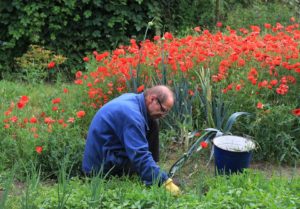Category: Lawn Care
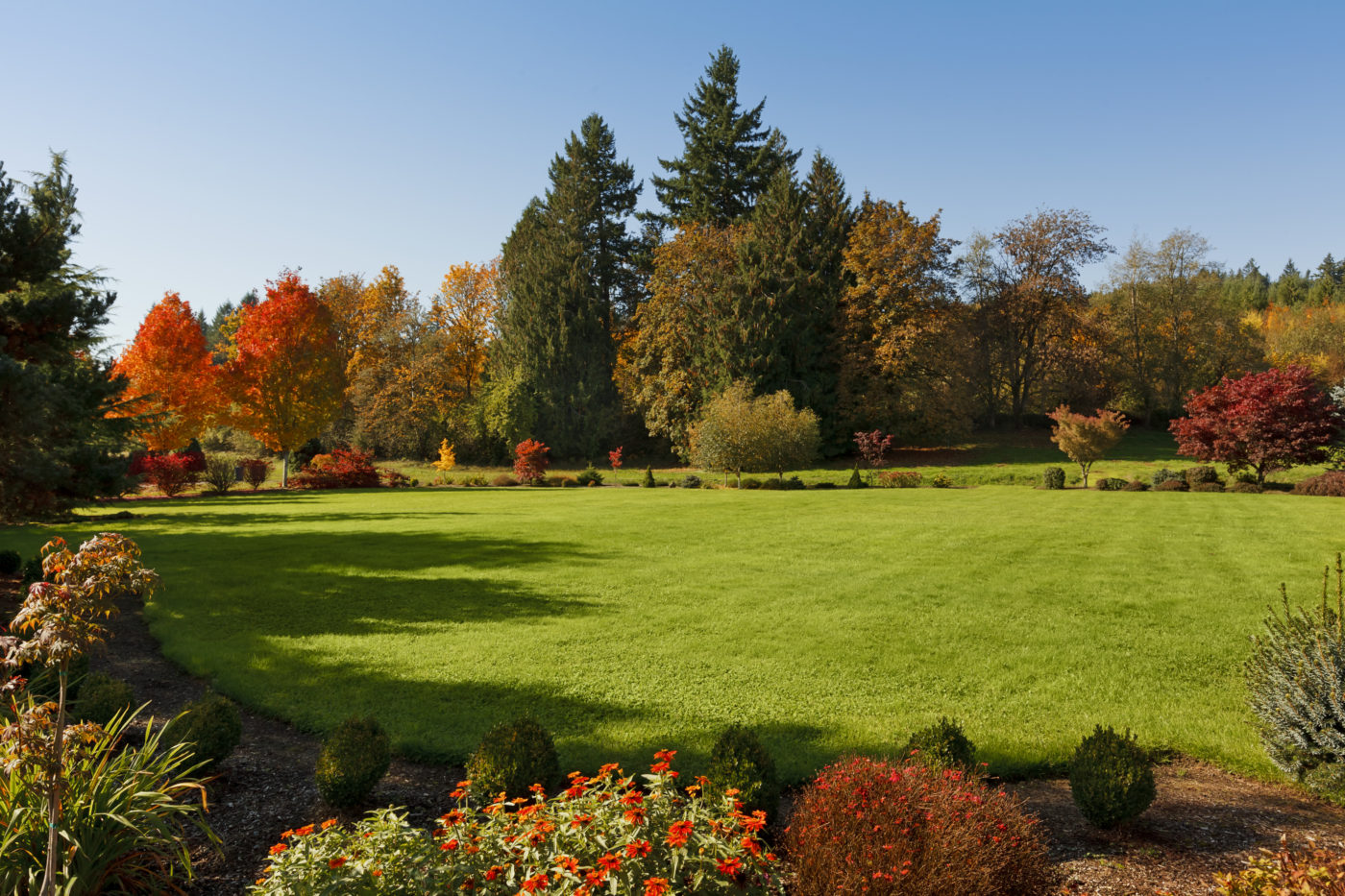
Lawn Aeration in the Fall Creates Healthy Landscapes
August 17, 2017Turf grass, like any plant, needs a strong root system to thrive. However, turf grass is pruned far more frequently than most plants– every time the grass is cut! This means grass spends most of its energy growing new foliage, instead of strengthening its root system. A poor root system means a plant, including grass, can’t get the nutrients it needs, is not able to survive extended dry periods, and is less resistant to pests and pathogens.
If you are a Hively Lawncare customer, you’re already helping your turf grass with regular fertilization. But what else can you do to improve its health? Lawn aeration! Lawn aeration, which refers to the removal of thousands of small soil ‘cores’ from the turf grass, allows water and fertilizer to more easily reach the root zone. Aeration also improves soil structure by reducing compaction, reducing thatch, and creating room for new roots to grow. At Hively, we recommend an annual lawn aeration due to the clay soils in our region.
For you DIYers out there, mechanical aerators are available at most local rental stores, but consider yourself warned— aerating is dirty, noisy, hard work, and it’s surprisingly easy to mess up! Hively offers both spring and fall aeration; the summer months are not ideal. So if you have better things to do with your time, contact Hively to learn more about lawn aeration and you’ll be one step closer to a healthier lawn!
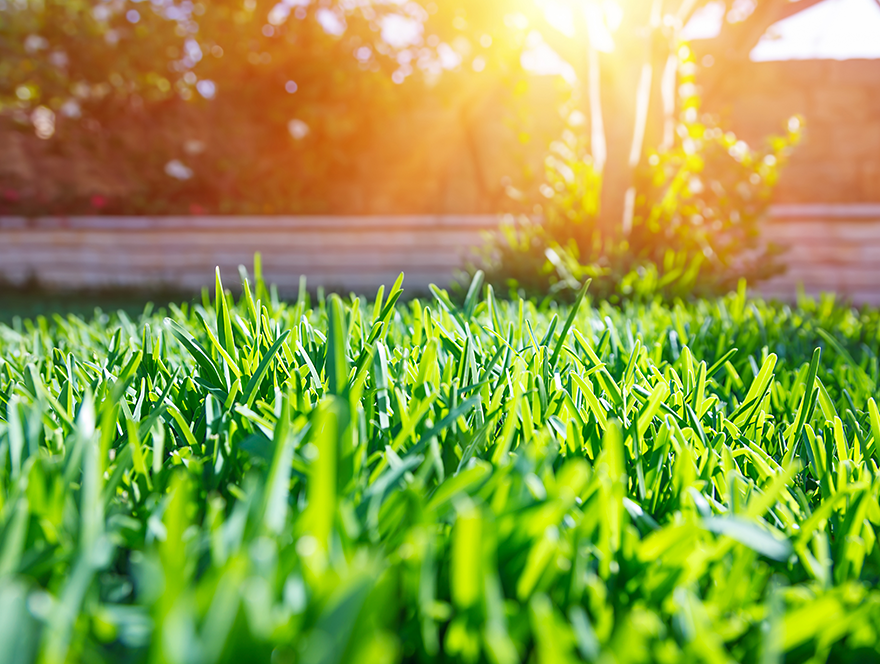
It’s Hot! Keep Your Landscape Happy with These Summer Weather Tips
June 23, 2017It’s the time of year when the air conditioning is cranked up and working outside is the last thing you want to do. Our region has experienced a mild and wet spring but summer is officially here and you can bet heat waves are in our future. While you can hide out in your AC, your landscape is stranded out there in the heat. How can you keep your landscape happy on the hottest of summer days? Follow these simple summer landscaping tips to help your plants survive the season.
Keep Your Landscape Hydrated
Landscapes, especially newly installed landscapes, can be vulnerable during dry, summer months, so maintaining a watering schedule based on the types of plants within your garden is essential. Look at the list below to see how often and for how long you should water your landscape.
No matter the plant, be sure that the water penetrates the roots. Lawn sprinklers are designed for grass, and are not the best choice for shrubs and flowers. This is because the water may stay on leaves and be evaporated before having the chance to reach the plant’s roots, or linger, inviting fungi to take residence on the plant.
In addition, help your landscape retain moisture by adding mulch around newly planted shrubs and trees.
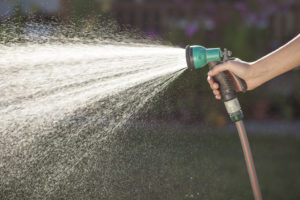
Fertilization
Most homeowners only think about fertilization during planting season, but certain varieties of plants can benefit from continual feeding throughout the hot season. The type of fertilizer you want is dependent upon the type of plant and your desired results. Plant food and fertilizers typically have three numbers listed on the label. These three numbers represent the percentage of nitrogen, phosphorous and potassium respectively. As a general rule, fruiting plants – fruits and vegetables – will prosper better with a higher ratio of phosphorous and potassium, while foliage plants, like shrubs, will benefit from higher ratios of nitrogen within their fertilizers.
Summer Landscaping Tips by Plant
Perennials
Water perennials, such as irises, hydrangeas, peonies and roses, for ten seconds twice a week during the summer. Use a nitrogen-rich fertilizer for flowering plants. Roses, azaleas and hydrangeas prefer acidic fertilizers.
Annuals
If the summer has been particularly dry, your annuals may need daily watering. Water for ten seconds, again, ensuring that the water penetrates the roots of the plant.
Shrubs
Water shrubs and bushes for thirty seconds each, twice a week. Holly bushes prefer acidic fertilizers, while leafy shrubs used for privacy will benefit from nitrogen-rich plant food.
Trees
Newly planted trees require much more water than smaller plants. Water your trees for three to five minutes twice a week during the summer. Evergreens and dogwoods benefit best from acidic fertilizers.
Summer Landscaping Tips for Your Lawn
Change the Height of Your Mower Blade
By allowing your grass to grow a bit longer, you are helping it survive the heat. When grass has been cut too short, it prevents the plants’ ability to photosynthesize or create their own food. If your grass has been growing for some time, and is considerably high, only cut one-third of its height. Wait a week, and continue to cut only one-third. Repeat until you have the desired length.
Sharpen Your Mower Blade
A dull blade won’t only mutilate your lawn, but can increase the damage to your grass caused by heat. A sharper blade helps your grass heal more quickly after being cut.
Leave Your Clippings Be
Unless your grass clippings are in danger of being blown into the street, storm drains or bodies of water, allow them to lie where they lay. The clippings will help to fertilize the remaining grass.
Resist the Urge to Fertilize, Aerate or Dethatch
Mixing high temperatures with fertilizer can harm your lawn and cause it to burn. Lawn aeration and dethatching should be avoided because it adds to the stress of the plants.
Don’t Flood Your Lawn
Water your lawn regularly, but not every day. Constant watering can weaken the grass and turn your yard into mud.
Check One More Thing Off Your List
Does the pressure of maintaining your lawn seem too much? Would you rather have professional, certified landscapers take care of everything than try to remember these summer landscaping tips? Contact Hively for a free consultation today!
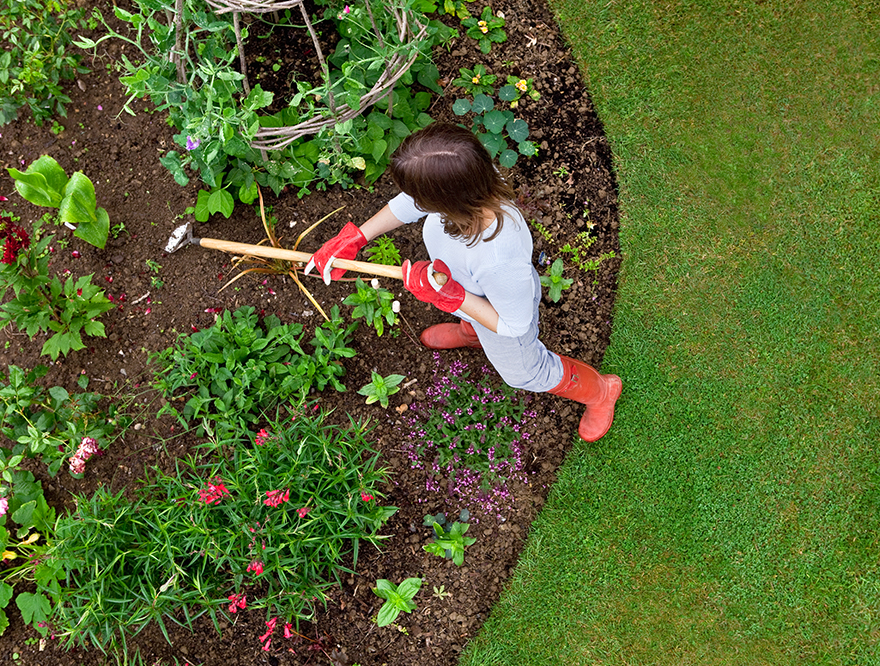
Choosing the Right Herbicide for Ultimate Weed Control
April 27, 2017Spring has arrived and with it will come all the joys of being outside enjoying your landscape…and weeds. Crabgrass, thistle, nutsedge and all of our other favorite perennial weeds will thrive this spring, especially because the of the mild winter that was not cold enough to permanently damage existing dormant seeds. Great! So, now what?
One of the most cost efficient and effective weed control methods is with the use of a pre-emergent herbicide. This is just what it sounds like; pre-emergent herbicides prevent weeds from emerging from seeds by interrupting the germination process as seeds move from dormancy to growth mode. It’s like putting down a barrier across the treated area that weeds can’t penetrate.
Most pre-emergent herbicides are granular or powder based and activated by water. Some pre-emergents are applied on their own and some are applied with other materials, like fertilizers. This gives pre-emergents the advantage of efficiency combined with a longer effective treatment period to help with extended weed control. Many pre-emergents have a 90 day efficacy if applied in ideal conditions. Since ideal conditions are pretty rare in real life, we suggest a 45 day inspection cycle which allows us the flexibility to re-apply material before weed pressure begins to increase.
In new or existing planting beds, pre-emergents are spread prior to new mulch. It is important to note that some pre-emergent herbicides can damage certain flowering perennials, annuals and bulbs that have not yet broken bud. It is very important to have an qualified and experienced applicator performing the applications to avoid any issues. The applicator must be able to read and follow the application instructions AND be able to positively identify plant material to ensure success.
Of course, any individual or company that applies herbicides and fertilizers for monetary compensation must be registered with the PA State Department of Agriculture. Registered individuals carry an ID card and registered companies are required to display their BU number on all vehicles that transport controlled chemicals and in all promotional materials. Hively’s BU number is 0299.
If you have a weed problem, or want to avoid having to deal with weed control, please contact our office for assistance. We love landscapes but we don’t like weeds!
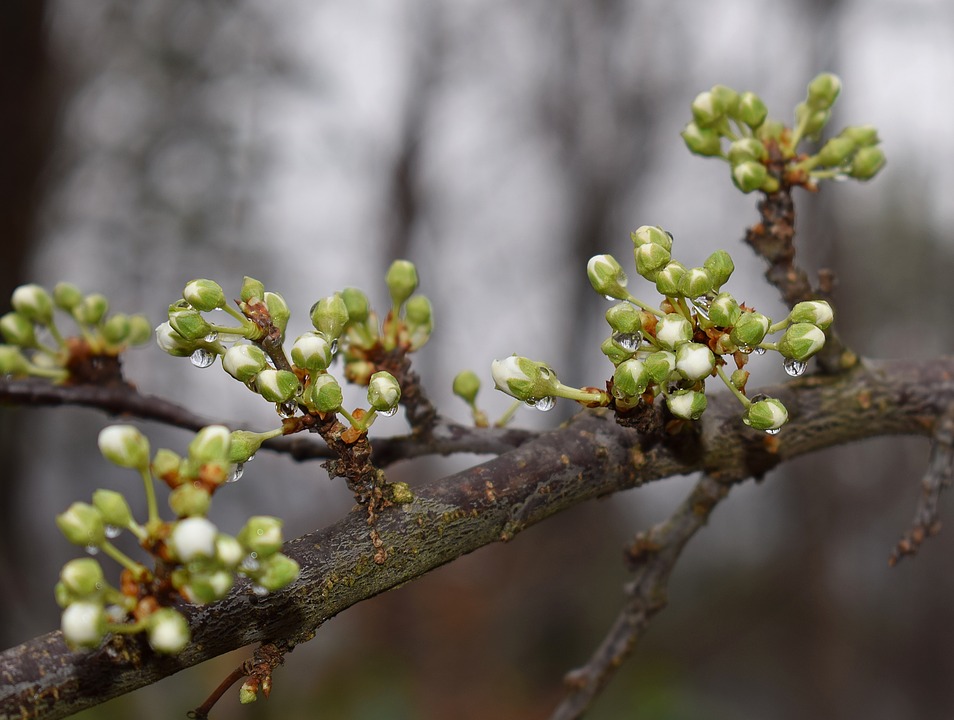
How Warm Winter Weather is Harming Your Plants
February 27, 2017Warm, 60- to 70-degree February weather in south central PA feels wonderful for those of us longing for spring, but your lawn and landscape don’t share the same sentiments. In fact, drastic changes in temperature can do quite a bit of harm to your lawn, trees and shrubs, and affect their health throughout the entire growing season.
If you’re wondering what kind of harm a little warm weather can do to your outdoor environment, we’ve broken it down for you below.
How a warm winter harms your lawn
Living in a climate characterized by cold winters means we use cool-season grasses in our lawns. Grasses such as Kentucky or rough bluegrass, ryegrass, fine or turf-type fescue all make great sunny area lawn grasses for Pennsylvania.

Ensure Landscape Success with Simple Soil Testing
August 24, 2016Summer is in full swing, and our recent travels around York, PA have revealed that this summer’s heat and lack of rain has taken a toll on local lawns and landscapes.
Many landscape owners believe that the problem is simply the inevitable result of this year’s extreme heat and irregular rain, but something else may be having an effect, and even with ideal temperatures and rainfall, that factor can prevent lawns and landscapes from being fully healthy and looking great.
Fortunately for these home and business owners, the team at Hively Landscapes has the ability to transform their lawns and landscapes from an eyesore into the lush green lawns and beautiful gardens you thought were only possible in commercials.
5 Lawn Care Tips to Keep Your Grass the Greenest on the Block
April 15, 2016If your landscape is like many, the most visible part of it is the grass. Grass, or turfgrass, is a source of pride and often frustration for many DIY homeowners. The team at Hively Landscapes would like to help alleviate some of that frustration by providing you with a few simple lawn care tips we’ve learned over the nearly 50 years we’ve been beautifying landscapes in Dover, PA.
If you’re interested in helping improve your lawn’s curb appeal, without pouring much more of your hard earned money into your landscape, we encourage you to follow these lawn care tips.
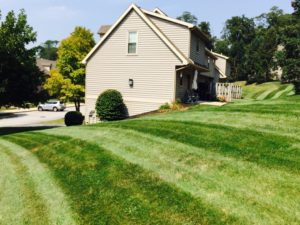 Let it GROW! The ideal length for the most common grasses in our region (fescue and bluegrass blends) is between 3 and 4 ½ inches. Grass cut to this length is better able to withstand dry stretches and longer grass can help inhibit the growth of many common weeds.
Let it GROW! The ideal length for the most common grasses in our region (fescue and bluegrass blends) is between 3 and 4 ½ inches. Grass cut to this length is better able to withstand dry stretches and longer grass can help inhibit the growth of many common weeds.- MULCH it! Most professionals prefer to mulch grass clippings generated by mowing and not to bag them. The truth is that grass clippings contain a high percentage of nitrogen, which returns to the soil when these clippings break down. Nitrogen also happens to be a key component of fertilizer and very beneficial to healthy grass.
5 Things to Look for In Your Next Landscaping Company
March 31, 2016Choosing the right landscaping company is easy, when you know what to look for.
With spring underway, it’s now time to dive headfirst into everyone’s favorite landscape maintenance tasks! If you enjoy this dirty, sweaty, and tiring chore as much as we do, you understand that this job comes with no finish line. As soon as you think you might be done, it’s time to start all over again. Lawn and landscape maintenance is a hobby that just keeps on giving! Day after day, week after week, year after year. Mowing, pruning, weeding, mulching, etc, etc, etc.
Ok, we realize it’s not quite as much fun for everyone as it is for us, and that’s why we offer proactive maintenance plans and other landscaping services for those people who just can’t find the time or the passion to do this kind of work.
So, if you don’t want to spend your wonderful spring, summer, fall, and even winter hours pushing a mower, digging out weeds, or pruning unruly trees and shrubs (and who can blame you?), how do you select a landscaping company that will do the job right? How do you know that company will treat your lawn and landscape with the same respect that you would, if you actually wanted to do all the work yourself?
Here are five things that you should look into before hiring any landscaping company:
- Reputation
While it may seem obvious, we still find it quite common that people will hire landscaping companies strictly on price, with no consideration of reputation or references. Don’t make this expensive mistake! There’s a reason why these companies charge $5 to trim a bush, and the next spring you find that your beautiful bush is barely alive. So check into what companies your neighbors are using. Then ask if these companies have solid references. If your neighborhood is like most others in Pennsylvania, you get bombarded in the spring and summer with flyers advertising grass mowing for a price that just seems too low to be true, such as $20.00. The truth is, these companies cannot maintain that price, and once the season kicks into high gear they’re nowhere to be found. We encourage you to check with friends and neighbors to see who their landscape contractor is, and if they’re happy with the work the company is doing for them.
